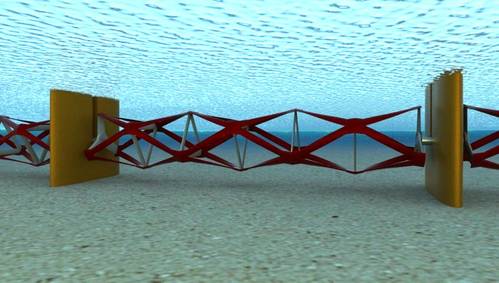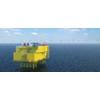Bristol Channel beckons for tidal energy scheme designed by Oxford University spin out
Kepler Energy is bringing forward plans for a 30MW tidal energy fence that will be located in the Bristol Channel. The tidal energy technology, akin to a water mill and which will use carbon composite technology, has been developed by Oxford University’s Department of Engineering Science for deployment in shallower, lower velocity tidal waters around the U.K. coastline but also in overseas waters. Subject to planning and financing, the initial Bristol Channel 1-kilometer £143 million tidal fence, which is likely to be located in the Aberthaw to Minehead stretch of water, could be operational by 2020-2021.
Kepler Energy, which holds the exclusive global license for the technology, said it is embarking on a funding round to take forward the project through the development phase and the planning process. While the technology is regarded as environmentally benign, it will be subject to a rigorous environmental impact assessment during the planning process to ensure that it bears no significant risk to marine life and other users of the sea.
Since its establishment in 2010, Kepler Energy has received assistance from Altran, Gurit, Mojo Maritime, GE, Royal Haskoning and other companies to develop its technology and explore sites where its tidal turbine technology could be deployed. Given its tidal flows and proximity to electrical infrastructure, Kepler considers the Bristol Channel to be an ideal location for its first scheme. The first phase of the tidal fence scheme will be up to a 1 kilometer long. Kepler believes that its tidal fences in the future could be 10 kilometers or longer.
Kepler has shared its outline plans with a range of stakeholders including the Department of Energy & Climate Change, the Welsh Government, The Crown Estate and Bristol City Council. It will embark on a wider stakeholder consultation program later this year.
Kepler’s patented turbine technology consists of a stressed truss configuration Transverse Horizontal Axis Water Turbine (THAWT). The Kepler turbine offers significant technological advantages over traditional axial turbines, enabling it to generate predictable, renewable electricity at very competitive costs in lower velocity and shallower waters, which axial flow turbines cannot replicate.
The simplicity of the patented truss design ensures the minimum of moving parts exposed to the tidal flow, whilst electrical equipment and controls are housed in dry columns. The rotor installation methodology requires no high cost specialist vessels, and can use much longer ‘weather widows’ than axial turbines operating in harsh weather and wave locations.
Peter Dixon, Chairman of Kepler Energy said, “As our tidal technology can operate in lower velocity tidal waters, there is greater scope for its deployment in the U.K. and overseas. It means that we can achieve greater economies of scale as our projects are deployed.
“We can happily coexist with tidal lagoons, and the power peaks will occur at different stages of the tide, meaning that the combined output into the Grid will be more easily manageable. In addition, our levelized costs of production will be in the range £100 to £130 per MWh for utility scale production, so costs will be cheaper than lagoons and in time we will be cheaper than offshore wind generation. Furthermore, investment risk is manageable since turbines are added incrementally to form the fence, with each one generating revenue as it is added.”
Commenting on the economic benefit of the project, Peter added, “Our Bristol Channel tidal fence, likely to be located in the Aberthaw/Minehead area, has the potential to mobilize the carbon fiber industry in the U.K. as well as create new and skilled jobs in Wales and the West Country. For example, for a 400MW fence, we will need as much as 15,000 metric tons of carbon fiber, which will deliver a huge boost to the industry. In summary, tidal fences offer a very practical and cost-effective source of utility scale renewable energy.”














 December 2025
December 2025



